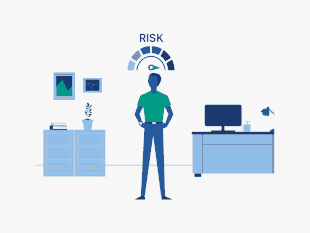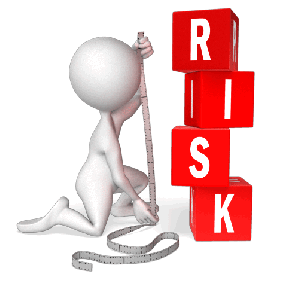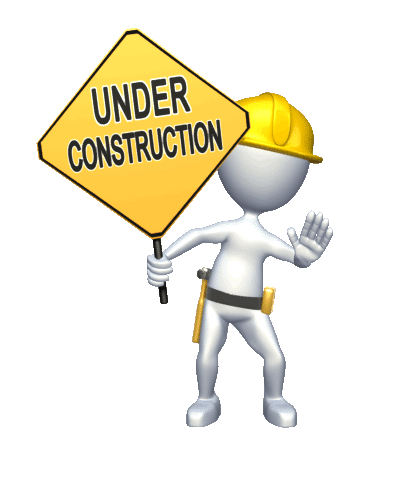Concerned about health and safety on the job?

Are you one of those concerned about health and safety on the job? You’re not alone. Across the length and breadth of the US, the millions of workers who are employed in the various sectors, be it manufacturing or services, or technological or agricultural, are prone to injury at the workplace. Not one kind of job or working condition or employment or workplace is free from the potential to cause injuries or illnesses. This is why there is every reason to be concerned about health and safety on the job.
 Yet,
there are a good number of security safeguards that have been put in
place in the form of legislations from the Occupational Safety and
Health Administration (OSHA). OSHA has been primarily enacted with the
purpose of giving employees rights to a safe workplace. Why every
employee needs to be concerned about health and safety on the job is
best answered by these disconcerting statistics:
Yet,
there are a good number of security safeguards that have been put in
place in the form of legislations from the Occupational Safety and
Health Administration (OSHA). OSHA has been primarily enacted with the
purpose of giving employees rights to a safe workplace. Why every
employee needs to be concerned about health and safety on the job is
best answered by these disconcerting statistics:
OSHA is about dispelling concerns about health and safety on the jobConsidering the damage that concerns about health and safety on the job can cause to the workforce as well as to the economy, the US legislated OSHA way back in December 1970. The main intention of this historic piece of legislation was to ensure safety of workers at the workplace not just through suggestions, but through actionable steps.
 The
hallmark of this legislation is that it empowers employees to demand a
safe workplace. If an employer is seen to be violating the provisions of
OSHA or if the employee feels that there is some form of potential
danger to her physical wellbeing at the workplace; she has the right to
complain to OSHA without fear of being retaliated against.
A host of rights to assuage concerns about health and safety on the jobAmong the main features of OSHA is that it requires the employer to publish employee rights about their safety at the workplace.
This enables them to allay concerns about health and safety on the job,
as they have a ready reference to which they can go back in case of a
doubt about the implementation aspects of any provision of OSHA.
Employees who are concerned about health and safety on the job have the
following rights:
The
hallmark of this legislation is that it empowers employees to demand a
safe workplace. If an employer is seen to be violating the provisions of
OSHA or if the employee feels that there is some form of potential
danger to her physical wellbeing at the workplace; she has the right to
complain to OSHA without fear of being retaliated against.
A host of rights to assuage concerns about health and safety on the jobAmong the main features of OSHA is that it requires the employer to publish employee rights about their safety at the workplace.
This enables them to allay concerns about health and safety on the job,
as they have a ready reference to which they can go back in case of a
doubt about the implementation aspects of any provision of OSHA.
Employees who are concerned about health and safety on the job have the
following rights:
Click to Continue Reading
Labels: importance of safety in our life, importance of safety rules, safety matters, why is safety important to me, why safety and health important in workplace

 This
is going to likely impact these important nodal cities of the global
economy to the extent that the world’s GDP is going to shrink by as much
as 1.5% percent till 2019. This translates to something in the order of
$ 1.2 trillion.
This
is going to likely impact these important nodal cities of the global
economy to the extent that the world’s GDP is going to shrink by as much
as 1.5% percent till 2019. This translates to something in the order of
$ 1.2 trillion.
 All
these factors would not have had the same impact as they are likely to
have in the current scenario and in the immediate and intermediate
future, if not for globalization. The world’s shift towards
globalization is now certain and irreversible. The interconnected nature
of the
All
these factors would not have had the same impact as they are likely to
have in the current scenario and in the immediate and intermediate
future, if not for globalization. The world’s shift towards
globalization is now certain and irreversible. The interconnected nature
of the 

 The
primary driver of this metamorphosis is risk management. Risk
management and analysis for medical device manufacturers has been the
lynchpin among the agents of change brought about into this field.
Quality has evolved as a result of the change in the import regime in
the US in the seventies, when products from around the world used to
deluge the US market.
The
primary driver of this metamorphosis is risk management. Risk
management and analysis for medical device manufacturers has been the
lynchpin among the agents of change brought about into this field.
Quality has evolved as a result of the change in the import regime in
the US in the seventies, when products from around the world used to
deluge the US market. In
the context of medical devices, risk management and analysis for
medical device manufacturers means applying a set of processes,
policies, methods and practices into their manufacturing systems in
alignment with respective and relevant standards as set out by global
standards such as the ISO. The aim of these standards and practices is
to analyze, assess, control and monitor risk. The ISO 14971 has been
revised many times and each time this is done, the latest one becomes
the extant version. This and other standards and practices prescribe
steps and processes that need to be implemented at all stages of the
product lifecycle.
In
the context of medical devices, risk management and analysis for
medical device manufacturers means applying a set of processes,
policies, methods and practices into their manufacturing systems in
alignment with respective and relevant standards as set out by global
standards such as the ISO. The aim of these standards and practices is
to analyze, assess, control and monitor risk. The ISO 14971 has been
revised many times and each time this is done, the latest one becomes
the extant version. This and other standards and practices prescribe
steps and processes that need to be implemented at all stages of the
product lifecycle. Risk
management and analysis for medical device manufacturers is to be
carried throughout the lifecycle of the medical device. A set purpose is
set out at each stage of the manufacturing process. For example,
medical device manufacturers are required to identify and eliminate
potential hazards at the initial stage using the concepts of product
optimization, and use the principles of risk elimination at all the next
stages, and to use the methods prescribed during a product recall.
Risk
management and analysis for medical device manufacturers is to be
carried throughout the lifecycle of the medical device. A set purpose is
set out at each stage of the manufacturing process. For example,
medical device manufacturers are required to identify and eliminate
potential hazards at the initial stage using the concepts of product
optimization, and use the principles of risk elimination at all the next
stages, and to use the methods prescribed during a product recall.
 It
needs to be understood that risk management is a set of processes that
need to be implemented extremely stringently and diligently at every
possible stage. Risk management is a journey, not a destination. For the
benefits of
It
needs to be understood that risk management is a set of processes that
need to be implemented extremely stringently and diligently at every
possible stage. Risk management is a journey, not a destination. For the
benefits of  Yet,
even though the dynamics of risk management are different across all
industries and are unique to each of them; the benefits of risk
management in all industries are there to be felt and experienced.
Yet,
even though the dynamics of risk management are different across all
industries and are unique to each of them; the benefits of risk
management in all industries are there to be felt and experienced.
 In
order to realize the benefits of risk management in all industries
fully, risk managers need to be on their guard all the time. This is
obvious and goes without saying, but in the light of the fact that some
risks can become enormous and uncontrollable at later stages, it is best
for
In
order to realize the benefits of risk management in all industries
fully, risk managers need to be on their guard all the time. This is
obvious and goes without saying, but in the light of the fact that some
risks can become enormous and uncontrollable at later stages, it is best
for 



 Viewed from the overall perspective of ensuring safety and quality and also in view of the
Viewed from the overall perspective of ensuring safety and quality and also in view of the 
 The
answer to the question of how risk management is important to project
success has to start with a basic understanding of risk. In the context
of
The
answer to the question of how risk management is important to project
success has to start with a basic understanding of risk. In the context
of  In order to manage a project successfully, the first step is carrying out
In order to manage a project successfully, the first step is carrying out  Planning:This
involves understanding the importance of risk management to project
success by planning the risk management in terms of its size. It is
generally true that the bigger the project from the operational,
logistical and financial perspectives; the greater the risk, and vice
versa.
Planning:This
involves understanding the importance of risk management to project
success by planning the risk management in terms of its size. It is
generally true that the bigger the project from the operational,
logistical and financial perspectives; the greater the risk, and vice
versa. Measuring the result: Judicious
and farsighted project managers measure the fallout of a risk
management activity by what it fetches. If a risk management activity
has accrued a certain expense that cannot be justified in the light of
the benefit it brought, then such a risk management action is not
effective and has not understood the importance of risk management to
project success.
Measuring the result: Judicious
and farsighted project managers measure the fallout of a risk
management activity by what it fetches. If a risk management activity
has accrued a certain expense that cannot be justified in the light of
the benefit it brought, then such a risk management action is not
effective and has not understood the importance of risk management to
project success.

 Identification
and establishment of failure modes are taken as the basis for using
risk reduction techniques for eliminating, containing, reducing or
controlling the possible failures.
Identification
and establishment of failure modes are taken as the basis for using
risk reduction techniques for eliminating, containing, reducing or
controlling the possible failures.  FMECA too, like FMEA, uses identification and establishment of the process specification to identify risks and failures
FMECA too, like FMEA, uses identification and establishment of the process specification to identify risks and failures
 Controlling of the risk or the negative outcomes of hazard, which could be due to any of these:
Controlling of the risk or the negative outcomes of hazard, which could be due to any of these:
 While
all the risk management methods and tools described above are a
snapshot of some of the major ones, a few supporting statistical tools,
too, are used to engender quality risk management. These are some of
them:
While
all the risk management methods and tools described above are a
snapshot of some of the major ones, a few supporting statistical tools,
too, are used to engender quality risk management. These are some of
them:

 The core aim of the Emergency Planning and
The core aim of the Emergency Planning and  The
Emergency Planning and Community Right-to-Know Act of 1986, which was
authorized by Title III of the Superfund Amendments and Reauthorization
Act (SARA); is rooted in the Bhopal gas disaster of 1984, which happened
thousands of miles away, in distant India. The widespread loss the gas
leakage caused to life alerted the US authorities about the dangers of
not having laws to regulate the handling of dangerous chemicals and
implementing the laws.
The
Emergency Planning and Community Right-to-Know Act of 1986, which was
authorized by Title III of the Superfund Amendments and Reauthorization
Act (SARA); is rooted in the Bhopal gas disaster of 1984, which happened
thousands of miles away, in distant India. The widespread loss the gas
leakage caused to life alerted the US authorities about the dangers of
not having laws to regulate the handling of dangerous chemicals and
implementing the laws. As
a step towards implementation of the EPCRA, each state is required to
appoint a State Emergency Response Commission (SERC). The EPCRA requires
these SERCs to divide their states into Emergency Planning Districts.
Each SERC has to also name a Local Emergency Planning Committee (LEPC)
for each of the districts.
The federal, state and local governments, as well as the industry and tribes are now under the ambit of the
As
a step towards implementation of the EPCRA, each state is required to
appoint a State Emergency Response Commission (SERC). The EPCRA requires
these SERCs to divide their states into Emergency Planning Districts.
Each SERC has to also name a Local Emergency Planning Committee (LEPC)
for each of the districts.
The federal, state and local governments, as well as the industry and tribes are now under the ambit of the 

 These
include mists, dust, fog, gases, sprays, vapors, etc. An employer who
employs people who work in these conditions is expected to provide
respirators to such employees. The employer may either provide these
respiratory systems or allow the employee to use one of his own, so long
as the product is of satisfactory quality standards. OSHA’s standard on
Respiratory Protection
These
include mists, dust, fog, gases, sprays, vapors, etc. An employer who
employs people who work in these conditions is expected to provide
respirators to such employees. The employer may either provide these
respiratory systems or allow the employee to use one of his own, so long
as the product is of satisfactory quality standards. OSHA’s standard on
Respiratory Protection  One
of the highlights of OSHA’s standard on Respiratory Protection Safety
Management Systems is that it requires the employer to put in place a
respiratory protection program. Each employer whose workplace has
conditions that are hazardous to the respiratory system has to establish
a written document that specifies what kind of respiratory system
protection he has put in place at the facility. Procedures that are
specific to the facility or workplace have to be described in this
program.
One
of the highlights of OSHA’s standard on Respiratory Protection Safety
Management Systems is that it requires the employer to put in place a
respiratory protection program. Each employer whose workplace has
conditions that are hazardous to the respiratory system has to establish
a written document that specifies what kind of respiratory system
protection he has put in place at the facility. Procedures that are
specific to the facility or workplace have to be described in this
program.
 Respirators
for Immediately Dangerous to Life or Health (IDLH) need to be provided
whenever and wherever necessary. The conditions that necessitate the
issuance of IDLH respirators are spelt out by the OSHA’s standard on
Respiratory Protection Safety Management Systems:
Respirators
for Immediately Dangerous to Life or Health (IDLH) need to be provided
whenever and wherever necessary. The conditions that necessitate the
issuance of IDLH respirators are spelt out by the OSHA’s standard on
Respiratory Protection Safety Management Systems:

 The
last of these is the biggest differentiator between this and other
legislations in this area. The Environmental Impact Statement is the
culmination of thought that has gone into Environmental Impact
Assessment (
The
last of these is the biggest differentiator between this and other
legislations in this area. The Environmental Impact Statement is the
culmination of thought that has gone into Environmental Impact
Assessment (
